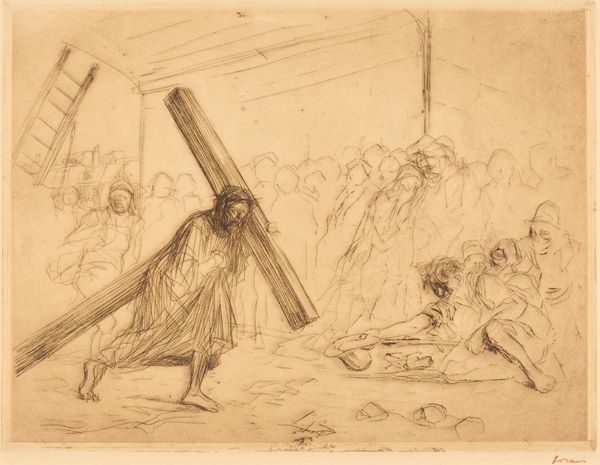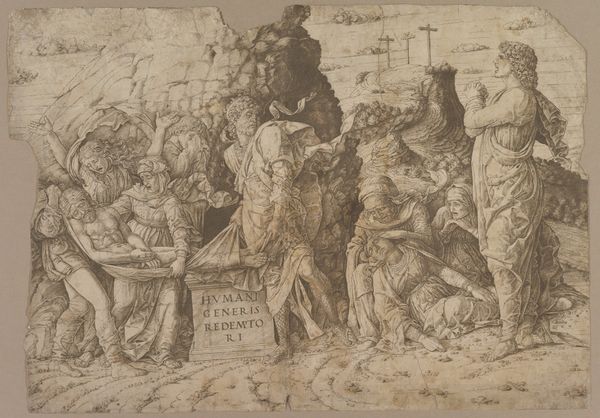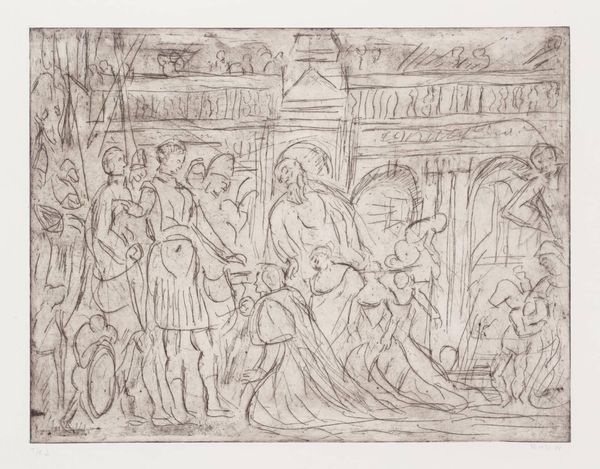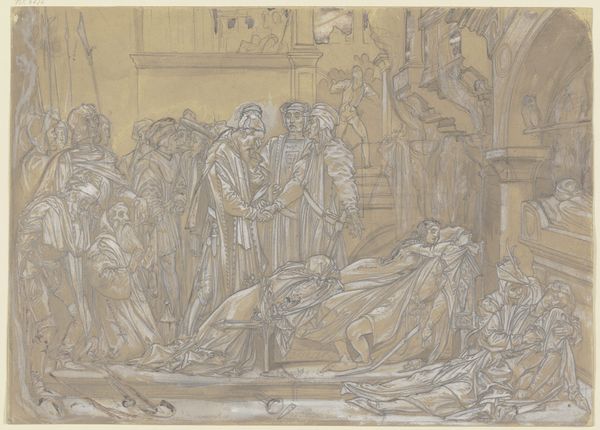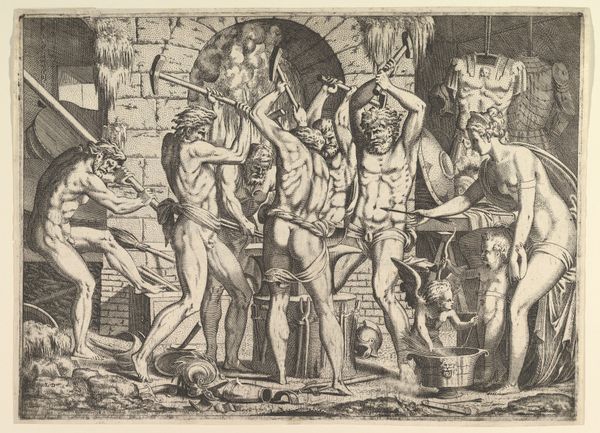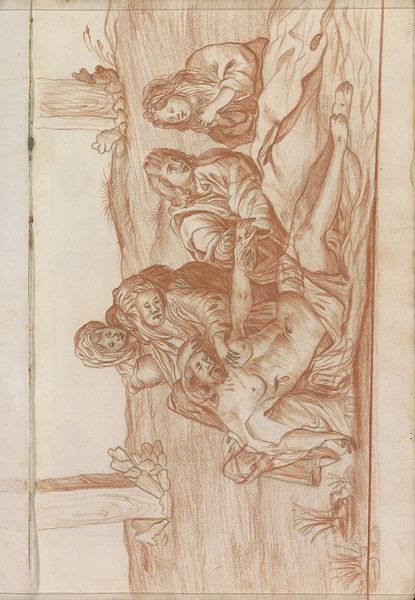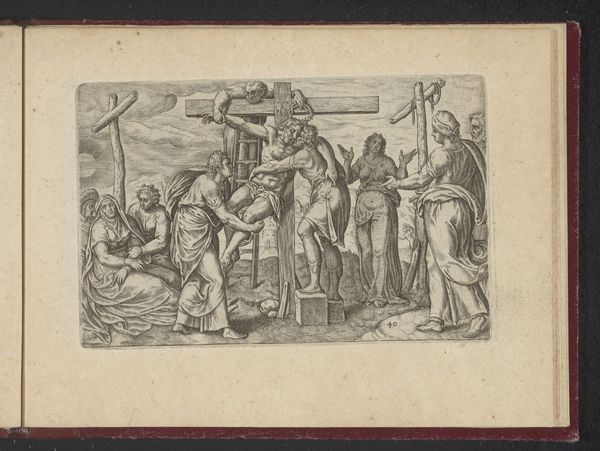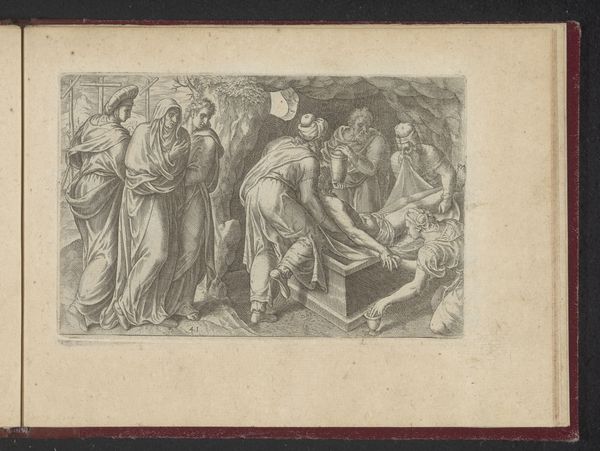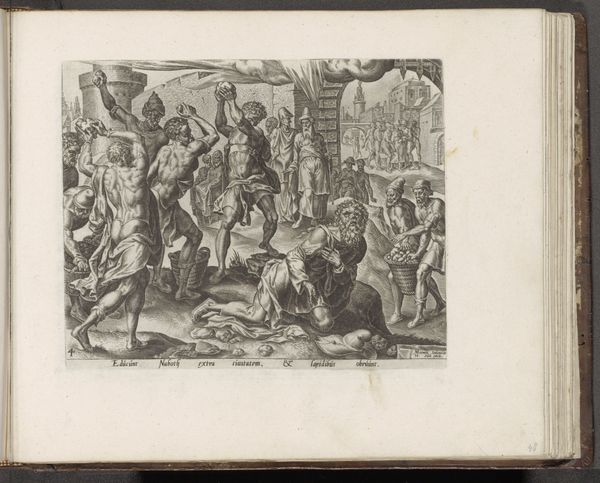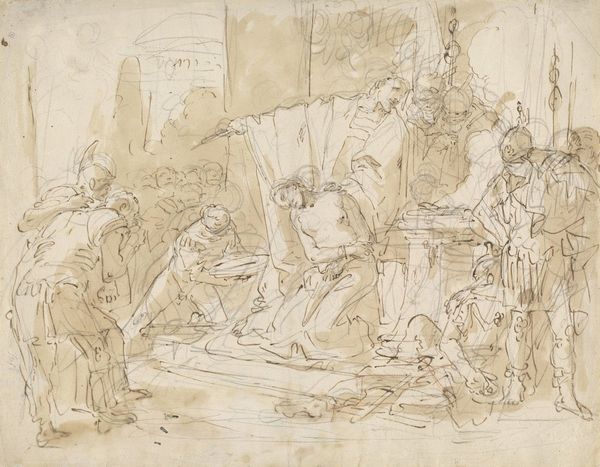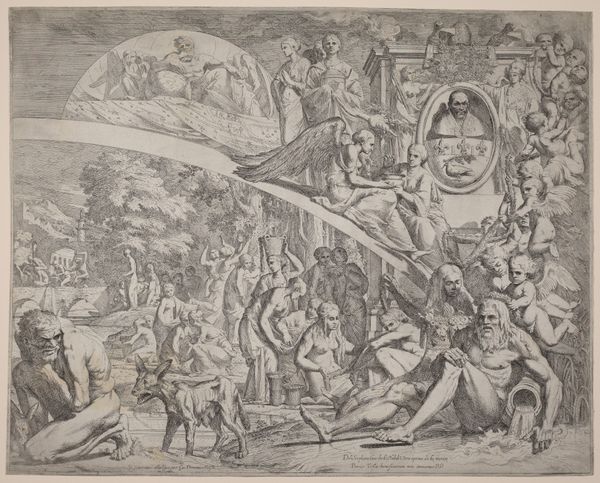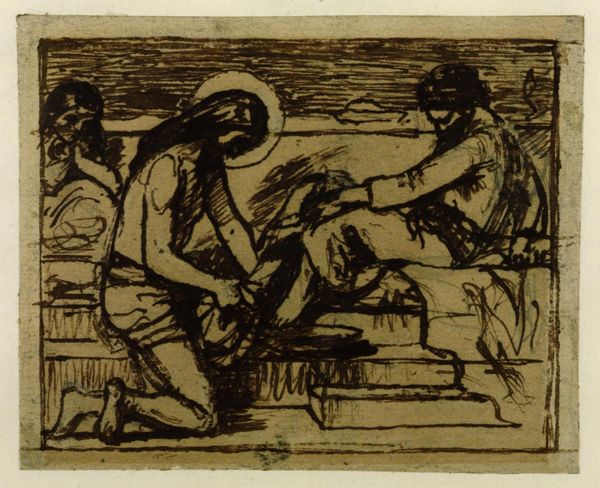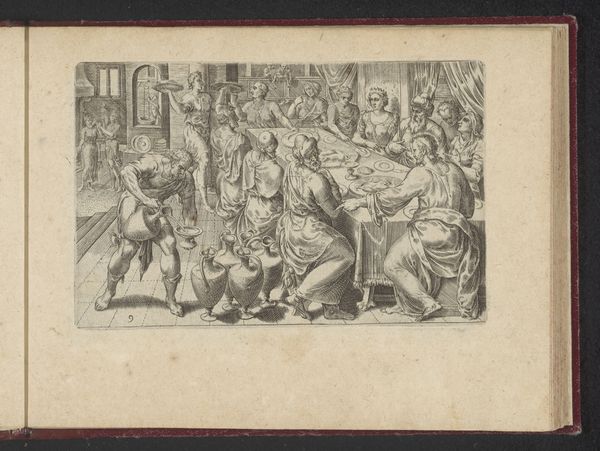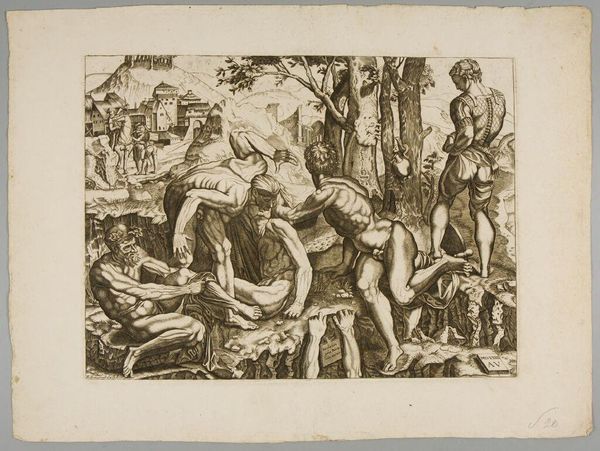
"Stations of the Cross" No. 11. "Jesus is Nailed to the Cross 1941
0:00
0:00
drawing, coloured-pencil, painting, watercolor
#
drawing
#
coloured-pencil
#
water colours
#
narrative-art
#
painting
#
figuration
#
watercolor
#
coloured pencil
Dimensions: overall: 42.7 x 61.1 cm (16 13/16 x 24 1/16 in.) Original IAD Object: Approximately 30 x 50 in.
Copyright: National Gallery of Art: CC0 1.0
Editor: So this is "Stations of the Cross" No. 11, "Jesus is Nailed to the Cross," created by Cornelius Christoffels in 1941 using coloured pencil and watercolor. It's a rather raw and disturbing image; the way Christ is positioned almost horizontally, being nailed, creates a sense of imbalance. What stands out to you from a formal perspective? Curator: The chromatic intensity certainly holds visual precedence. Notice the artist’s calculated deployment of color—earthy browns and muted greens—which function as indices of somber affect. Consider the figuration of the human subjects, all are depicted as solid geometrical shapes that lack individualism. How do those qualities factor in relation to your experience of the overall piece? Editor: I see what you mean about the color; it definitely adds to the somber mood. And the geometrical figures…it's almost like they are stripped of emotion, contributing to the coldness of the scene. The use of line also strikes me. There's a lot of quick, gestural linework, creating a sense of urgency. Is that deliberate? Curator: Precisely. Observe the lines—rapid, jagged, seemingly impulsive—in their structural function to enhance a palpable sense of anxiety. They aren't merely descriptive but operative; they build toward a sensation. Also consider, then, the semiotic weight of this, where lines and colors stand in as signifiers. What interpretation does this invite, given that it departs from a traditional, photorealistic treatment of the subject? Editor: It makes me think that the artist is trying to convey an internal, emotional truth, rather than a literal depiction of the event. Maybe even abstracting from it, turning an overtly religious scene into one that conveys more universal concepts about the human condition and how we deal with the experience of injustice. Curator: An astute observation. In that case, formalism permits us a glimpse beyond the overt content to a broader meditation on experience, meaning, and, in the final instance, essence. Editor: It’s amazing how just analyzing the colors and shapes can open up so many possibilities. Thank you.
Comments
No comments
Be the first to comment and join the conversation on the ultimate creative platform.
